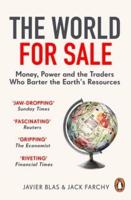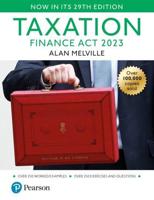Publisher's Synopsis
At the end of August 2013, the Minister of National Finance of Sudan announced that there should be increases in oil and wheat prices. The reasons behind as he spoke were that the country faces economic crises. What he did not clearly said was that it was the country was in complete economic collapse. Rumors were that the treasury was empty. It was possible that salaries of November 2013 were going to be paid. The paramount truth was that the real productive economic sectors, agriculture, and industry were in shambles. The National Salvation Front (NSF) controlled the country by iron and armored fist, in total tyranny and totalitarian horror. The financial institutions were in tatters and the whole governmental structure was corrupt. The southern part of the country seceded. It was real economic crises as it has taken with it 75% of the country mainstay, oil fields. Oil has been discovered early but economically utilized by 1999. The NSF did not spend the revenues on maintaining its agriculture nor agriculture. Moreover, oil production volumes and revenues remained a state secret. Where has oil revenues gone, nobody could answer the question except by one word, corruption. During that mismanagement tragedy economic chaos, the financial institution endured similar process. Islamization and mismanagement lead to their collapse. Huge sums of loans were given to the regimes cohorts. They were never repaid. More stories surfaced about other huge sums paid to authoritarian figures. They were not paid back too. The banks' crises in a poor country as Sudan led to collapse which was subsidized from the state's treasury. It is said that the lost money amounted to over 30 Billion dollars. During that time oil revenues were sufficient to refund such losses. However, the crises remained as a black spot threatening the whole financing system. Financial restrictions were required even for such mismanaged and corrupt system to prevent it from collapse. The governmental deficit finance was however, increasing the pressures on its viability to finance the country's economic activities. The document analyzes the impacts of Islamic and conventional Banks reserves' restrictions in Sudan. Comprehensively, those restrictions are necessary for healthy banks performance and the viability of the macroeconomic performance in any country. The selected period of the analysis (2007-2009) is vital to study impacts of the Global Financial Crisis on the Sudanese economy. Additionally during that period, the downward trend happened. The document introduces available data on banks institutions, macroeconomic policies, and the central Bank of Sudan considering its part on controlling money supply and demand besides drawing policies for banks behaviors. It is conceivable from my conclusions here that there are conflicts between conventional and Islamic banks in reserves restrictions that impede normalized bank rules and the Central Sudan Bank's limitations during feasible financial and economic crisis. Thus, the slow and ineffective responses to the Global Financial crisis, in fact the failure can be due to those conflicts between the two banking regimes. Compared with other Islamic banking institutions that complied to recommended responses to the crisis that Sudanese case reveals differently. The Islamic banks could not respond effectively due to the so imposed interest rates on the required monetary subsidy from the Sudan Central Bank. Moreover, the deprivation of the oil revenues to the latter limited its abilities to support both the conventional and Islamic banks of the country. The results were manifested in their limited ability to cater for the required financing to the real productive economic sectors of Sudan. The consequent crisis of the year 2011 is a direct result of that lamed ability to finance the production sectors and their collapse that contributed to the Sudanese economy.









